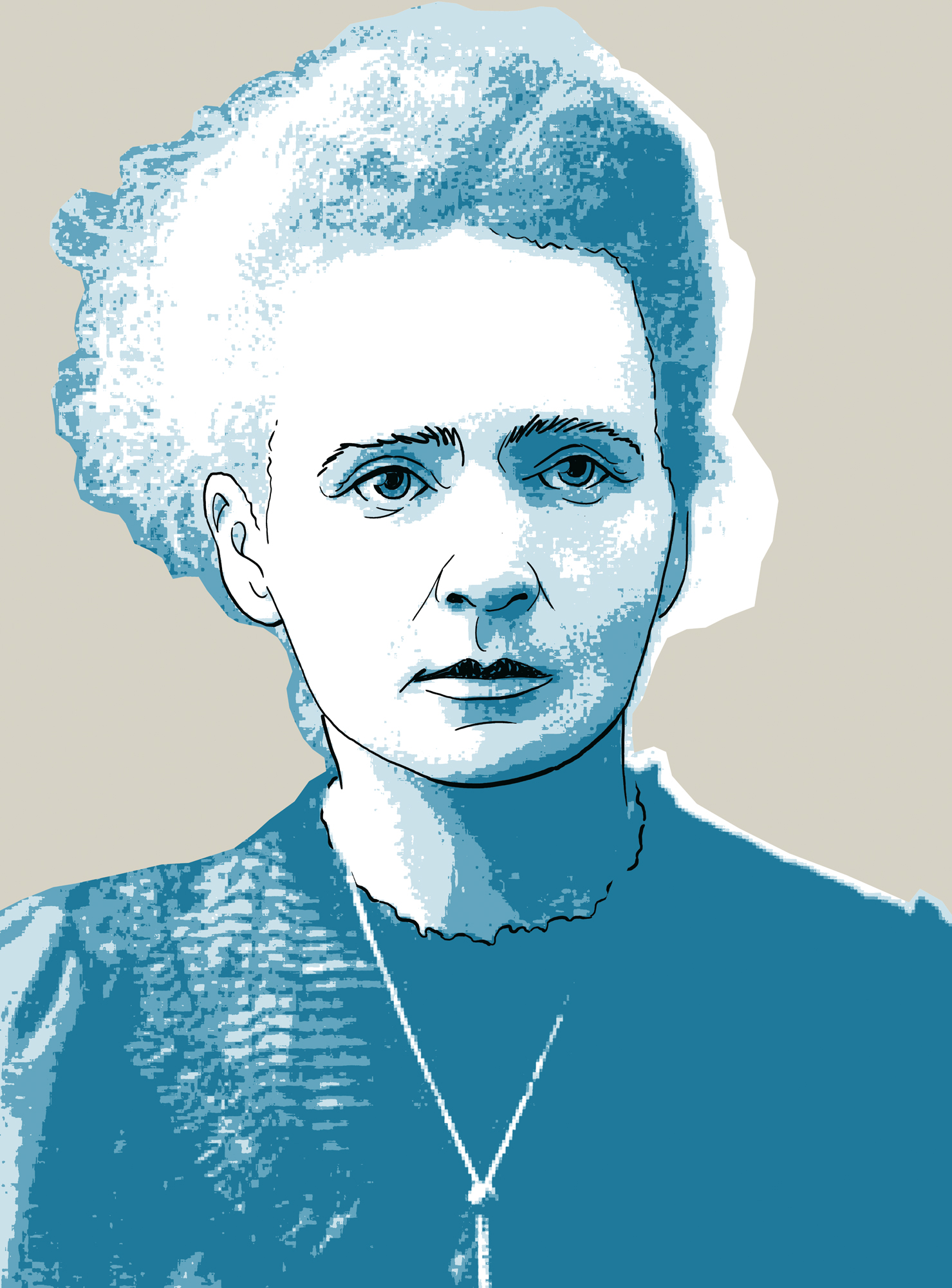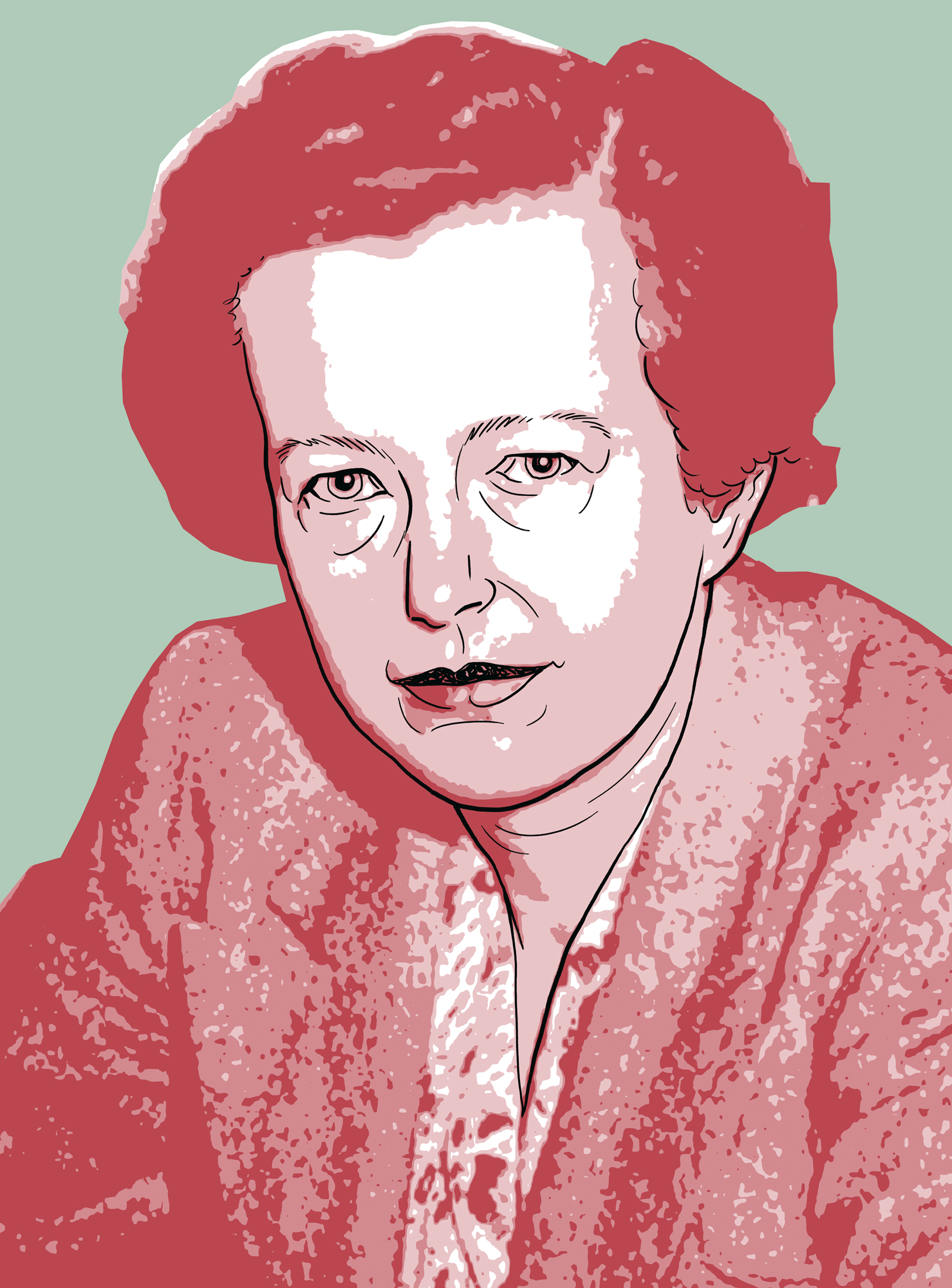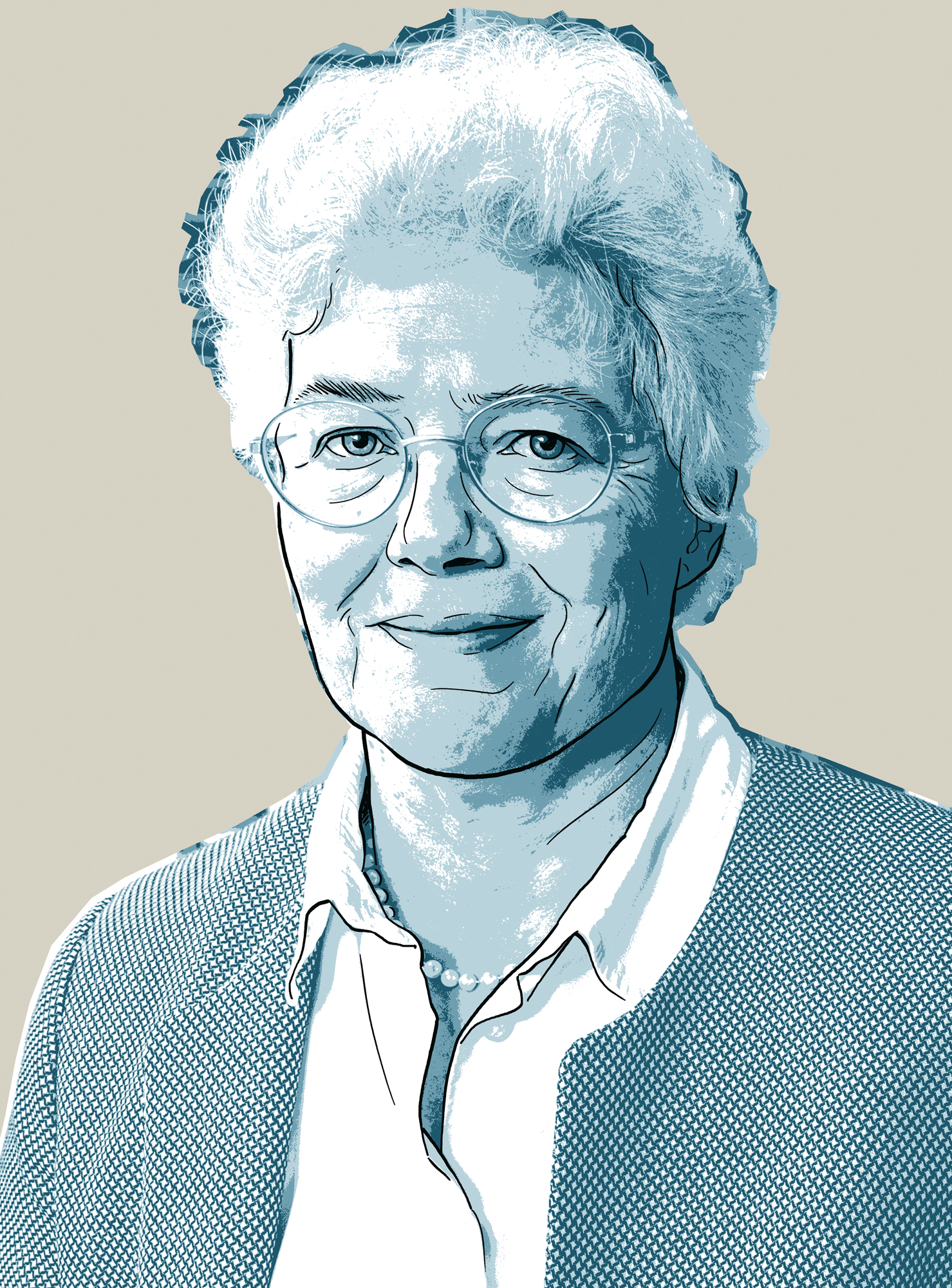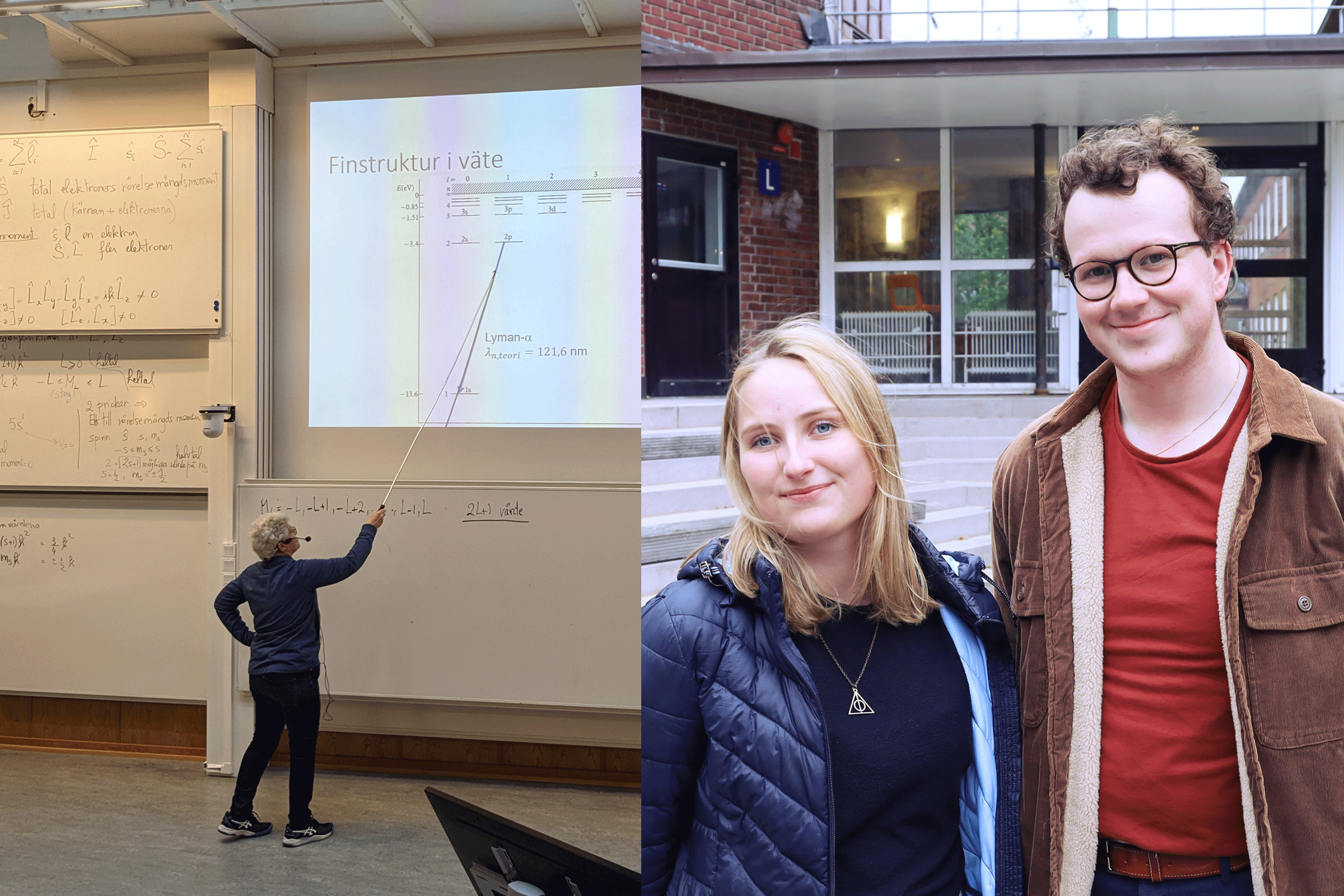
The Nobel Prize in Physics 2023
1987, a year after Anne L’Huillier obtained her doctorate, she conducted one of the first groundbreaking experiments demonstrating how overtones of light are generated when intense laser light is passed through noble gases. These overtones arise as the light from the laser interacts with atoms in the gas, it gives some electrons extra energy that is then emitted as light.
At the Faculty of Engineering (LTH), a new research area in Atomic Physics began in the early 1990s. In 1992, they managed to acquire a unique laser, a terawatt laser capable of firing 10 ultra-short pulses per second. Thanks to this new laser, LTH was able to attract Anne L’Huillier to Lund.
In a series of works, Anne L’Huillier continued to explore the effect she discovered in 1987 and contributed to the theoretical understanding of the phenomenon, thus paving the way for the next experimental breakthrough.
In 2001, Pierre Agostini succeeded in producing and investigating a series of consecutive light pulses, in which each pulse lasted just 250 attoseconds. At the same time, Ferenc Krausz was working with another type of experiment, one that made it possible to isolate a single light pulse that lasted 650 attoseconds.
The laureates’ contributions have enabled the investigation of processes that are so rapid they were previously impossible to follow.

The light pulses that open the door to the microcosmos
Electrons move so incredibly fast that they were long thought to be unobservable. Despite the difficulties, many researchers were determined to try in different ways. What motivated these efforts, you might ask? Curiosity, of course.
But also because knowledge can be translated into practical benefits. If we learn more about nature's smallest building blocks, we can eventually control them. Since electrons control the properties of all materials – electrons are the contact surface of the atom with the outside world – there is potential for their application in virtually all areas where the aim is to influence materials at the molecular and atomic levels.
Perhaps in the future, the laser method that creates these attosecond pulses will allow us to better understand photosynthesis, develop more efficient solar cell technologies or build electronics at the molecular level. Several medical applications have also been mentioned. Some of these tracks are already being explored, while others are still at the idea – or dream – stage.
Back to basic research. In all honesty, we cannot "see" an electron cloud in real-time. However, thanks to attosecond pulses, the extremely fast-moving electrons can now be studied after all.
Facts | Anne L'Huillier
Anne L'Huillier has been a professor of physics at the Department of Physics, LTH, Lund University since 1997. The journey towards the Nobel Prize begins in France with a double master's degree in 1979 – in physics and mathematics, respectively – and a Ph.D. in physics in 1986.
In 1987, Anne L'Huillier conducts one of the first groundbreaking experiments demonstrating how overtones of light are generated when intense laser light is passed through noble gases. Research in attosecond physics continues for Anne L'Huillier in Sweden, the USA, and France, and in 1995, she becomes affiliated with Lund University and LTH.
Anne L'Huillier has supervised around thirty doctoral students and taught courses on laser physics, photonics, and atomic physics. She has held several scientific appointments, including serving as a member of the Nobel Committee for Physics from 2007 to 2015, with the final year as the chairperson.
She has also been awarded numerous honors, with some of the recent ones being:
2022
- Wolf Prize in Physics (shared with F. Krausz and P. Corkum)
- BBVA Frontiers of Knowledge Award (shared with F. Krausz and P. Corkum)
2023
- Lund University Gold Medal
- Berthold Leibinger Zukunftspreis
- Nobel Prize in Physics (shared with P. Agostini and F. Krausz)
The research environments within which Anne L'Huillier and her research colleagues in Lund operate are:
- Lund High-Power Laser Facility at Lund Laser Centre (LLC)
- Light and materials (Profile Area at Lund University)
- Photon Science and Technology (LTH Profile Area)


Everyday laser flashes and real-world attosecond physics
Down in the basement of the Department of Physics, the now world-famous short laser pulses are fired almost daily. This is home to Sweden’s cutting-edge research in attosecond physics. According to Per Eng-Johnsson, professor in atomic, molecular and optical physics at the Faculty of Engineering (LTH), the research field is currently in the midst of a paradigm shift.
The term “DIY” may appear to be an unlikely description of a high-tech laser laboratory used by a Nobel Prize-winning scientist. Yet this is the word Per Eng-Johnsson chooses to describe some aspects of the laser systems used by the 25 researchers and doctoral students at Lund University when investigating the world with attosecond pulses.

Marie Skłodowska-Curie (1867–1934)
Marie Curie, born in Warsaw, was awarded the Nobel Prize in Physics in 1903, alongside Henri Becquerel and Pierre Curie, for their research on radioactivity. She was the first woman to receive a Nobel Prize. In 1911, she also became the first woman to receive the Nobel Prize in Chemistry for the discovery of the elements radium and polonium. Marie Curie stands alone in having received the Nobel Prize in two different scientific categories.
Maria Goeppert-Mayer (1906–1972)
Maria Goeppert-Mayer, German-American physicist, was awarded the Nobel Prize in Physics in 1963, along with Eugene Wigner and J. Hans D. Jensen, "for their discoveries concerning nuclear shell structure". In 1948, Goeppert-Mayer presented a model that organized protons and neutrons in an atomic nucleus into a series of "shells," similar to the arrangement of electrons outside the nucleus.


Donna Strickland (1959–)
Donna Strickland, from Canada, was awarded the 2018 Nobel Prize in Physics along with Gérard Mourou and Arthur Ashkin “for their method of generating high-intensity, ultra-short optical pulses.” She developed high-intensity lasers, and the technology is now used in research as well as in millions of eye surgeries each year to correct refractive errors.
Andrea Ghez (1965–)
Andrea Ghez is an American astronomer who, along with Reinhard Genzel, was awarded the Nobel Prize in Physics in 2020 “for the discovery of a supermassive compact object at the centre of our galaxy”. This object is a black hole with a mass equivalent to four million suns.


Anne L'Huillier (1958–)
Anne L'Huillier was awarded the Nobel Prize in Physics in 2023 alongside Pierre Agostini and Ferenc Krausz. The three Nobel Laureates in Physics 2023 are being recognised for their experiments, which have given humanity new tools for exploring the world of electrons inside atoms and molecules. They have demonstrated a way to create extremely short pulses of light that can be used to measure the rapid processes in which electrons move or change energy.

Marie Skłodowska-Curie (1867–1934)
Marie Curie, born in Warsaw, was awarded the Nobel Prize in Physics in 1903, alongside Henri Becquerel and her husband Pierre Curie, for their research on radioactivity. She was the first woman to receive a Nobel Prize. In 1911, she also became the first woman to receive the Nobel Prize in Chemistry for the discovery of the elements radium and polonium. Marie Curie stands alone in having received the Nobel Prize in two different scientific categories.

Maria Goeppert-Mayer (1906–1972)
Maria Goeppert-Mayer, German-American physicist, was awarded the Nobel Prize in Physics in 1963, along with Eugene Wigner and J. Hans D. Jensen, "for their discoveries concerning nuclear shell structure" In 1948, Goeppert-Mayer presented a model that organized protons and neutrons in an atomic nucleus into a series of "shells," similar to the arrangement of electrons outside the nucleus.

Donna Strickland (1959–)
Donna Strickland, from Canada, was awarded the 2018 Nobel Prize in Physics along with Gérard Mourou and Arthur Ashkin “for their method of generating high-intensity, ultra-short optical pulses.” She developed high-intensity lasers, and the technology is now used in research as well as in millions of eye surgeries each year to correct refractive errors.
Andrea Ghez (1965–)
Andrea Ghez is an American astronomer who, along with Reinhard Genzel, was awarded the Nobel Prize in Physics in 2020 “for the discovery of a supermassive compact object at the centre of our galaxy”. This object is a black hole with a mass equivalent to four million suns.

Anne L'Huillier (1958–)
Anne L'Huillier was awarded the Nobel Prize in Physics in 2023 alongside Pierre Agostini and Ferenc Krausz. The three Nobel Laureates in Physics 2023 are being recognised for their experiments, which have given humanity new tools for exploring the world of electrons inside atoms and molecules. They have demonstrated a way to create extremely short pulses of light that can be used to measure the rapid processes in which electrons move or change energy.






